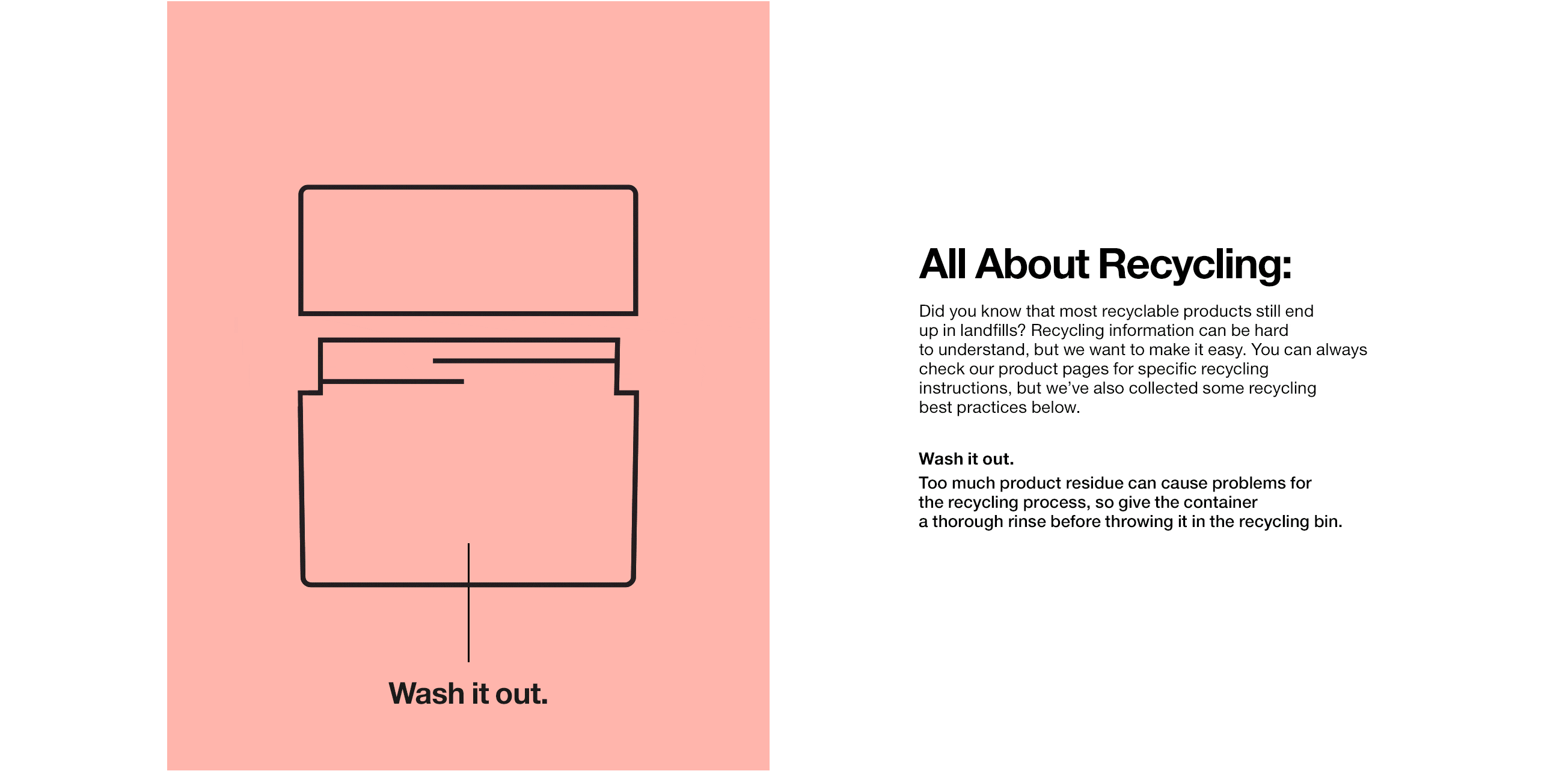In our efforts to help build a healthier world,
we’ve set some big sustainable packaging goals.



Sustainability terms to know.
The language around responsible packaging can be hard to navigate—but it doesn’t have to be.
Our Sustainability Glossary is your cheat sheet for all the terms you need to know.
| Recyclable | Packaging that can be widely recycled in practice and at scale through current recycling streams. |
| Refillable | Packaging that can be recharged or refilled. |
| Recycled | Material diverted from the waste stream through external Post-Consumer Recycled streams. |
| Recoverable | Materials collected through take-back programs that will either be recycled or converted into energy. |
| Life Cycle Assessment | Systematic analysis of the environmental impacts of products during their entire life cycle. |
| PCR post-consumer recycled product | Packaging created from materials that have already been used and would otherwise have been thrown away (think plastic water bottles), reducing the creation of new plastic waste. |
| Plant-Derived Plastic | Plastic made from an agricultural byproduct of processing crops like sugarcane that would otherwise be discarded. |
| Responsibly Sourced Paper Products | Renewable materials that are grown and harvested, produced, packed, and transported using management practices that maintain the productivity of natural systems without compromising their capacity for future generations. Suppliers must be verified and certified to ensure they meet quality and environmental standards. |
| Mechanical Recycling | A method by which waste materials are recycled into “new” or “secondary” raw materials without changing the original material’s basic structure. Also known as material recycling, material recovery, or—when related to plastics—back-to-plastics recycling. |
| Chemical Recycling | The process of breaking down polymer or plastic structures into more basic building blocks to create plastic feedstock that is used to produce new materials or packaging. |
